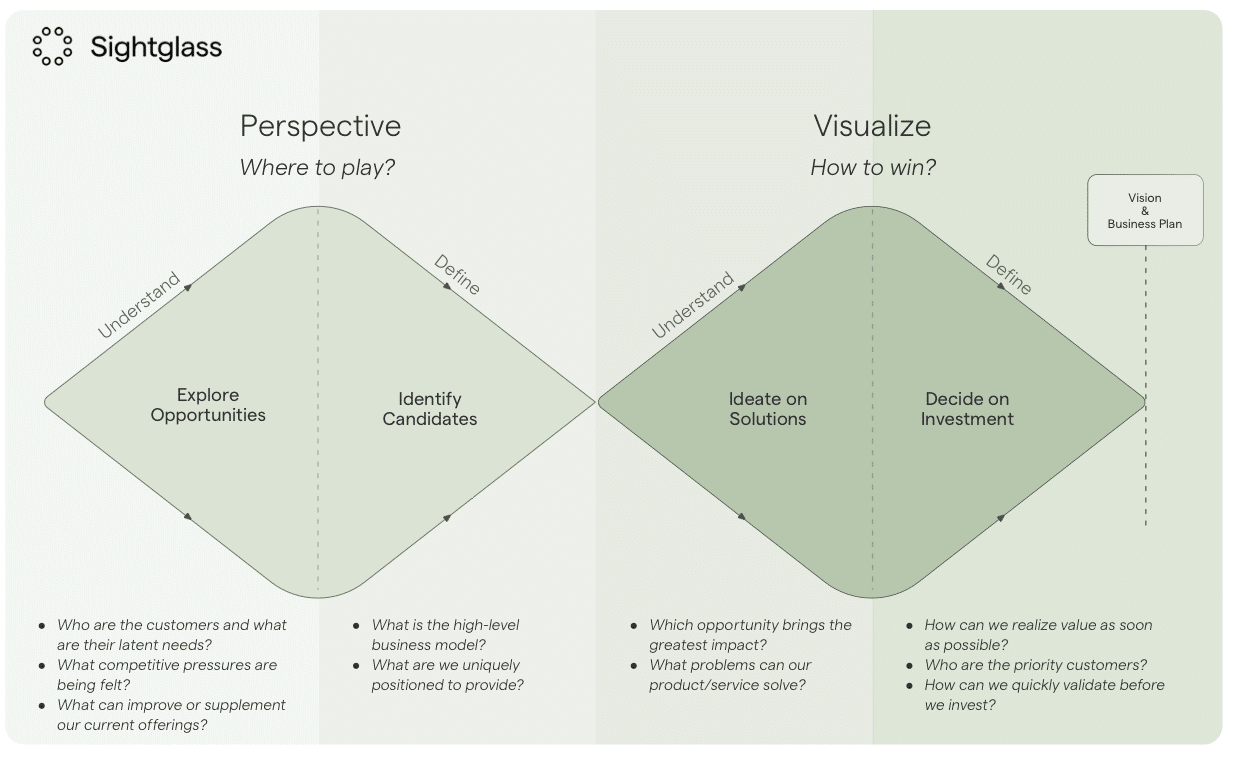When large enterprises need to accelerate growth and secure their market position, purchasing a promising start-up can be a pragmatic approach to expanding their product portfolio and broadening or deepening their capabilities.
However, acquisitions aren’t without peril. The whole isn’t always greater than the sum of its parts, and combining the best of two companies is more challenging than most of us realize. This is especially true when bringing together two distinct company cultures – which is often the case when enterprises merge with start-ups as both have different ways of doing things.
This challenge was particularly apparent during a recent Sightglass engagement in which a much larger software platform acquired a complementary software start-up. Although immensely talented, the acquired team struggled to find its footing and effectively contribute to building on an ever-expanding product portfolio within an enterprise context to product development.
The acquired start-up was now armed with ample funding, stability, and space to focus. But their organic approach to product development didn’t work for their new leadership at the larger organization. The new executive team wanted delivery metrics, time-boxed innovation with deadlines, and an entire business case.
The new project assigned to the acquired team was the same scope as their entire start-up and part of a much bigger program, making matters worse. They were quickly in over their heads and needed a crash course on how to manage a diverse portfolio, work with a new type of stakeholder, and deliver a program of work including, but not exclusively, centered on innovation.
Empowering Team-Driving Innovation
Sightglass was engaged to coach the acquired team on how to ideate and create a vision for a new product and build a compelling market opportunity thesis.

Combining workshops and coaching, Sightglass guided the acquired team through developing a business case, customer journey, and market validation of the concept and revenue goals.
Midway through the engagement, there was a transition in leadership that left the development of the new product rudderless. In most cases, this would have derailed or nullified the strategic work already done. But the Sightglass team was able to stretch and leverage its experience in product design and development to become an executive coach for the new VP of Product.
A second roadblock emerged when the team lost access to key stakeholders, who were pulled away for an urgent situation. Without their critical insights to help shape the product vision, the team needed a decisive pivot.
Fortunately, the Sightglass team had hands-on expertise in foundational product design. This previous experience filled the short-term research gap and kept the product development process on schedule.
Unforeseen disruption – leadership changes, critical research gaps, derailed processes – certainly are not an anomaly for leadership teams. Perhaps the toughest lesson for any team within a large enterprise is how to ensure an ROI when the needs of the business change midway through the engagement?
Fortunately, because Sightglass had experience in both executive strategy and development, the overall engagement was still meaningful, and the outcome was still valuable – despite the setbacks. The client had a vetted vision and business plan and a team ready to develop the next product.






